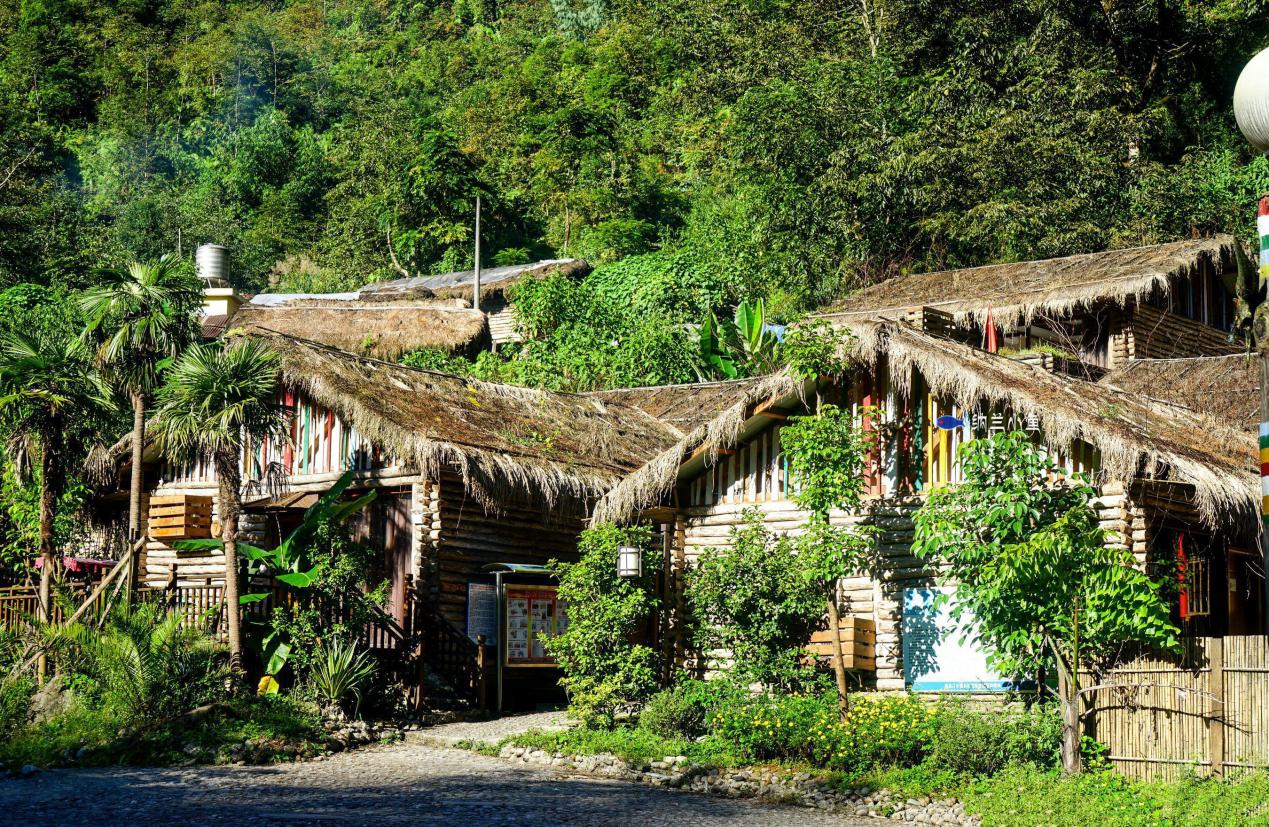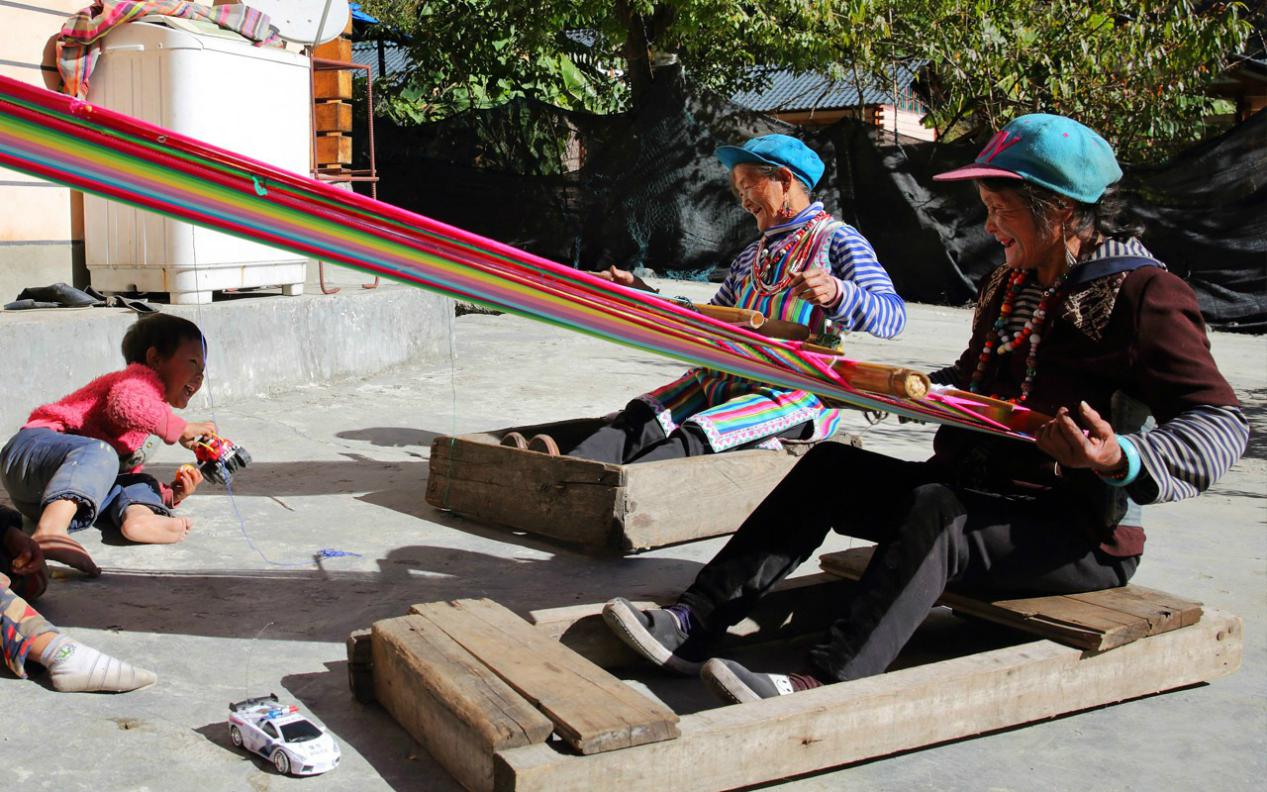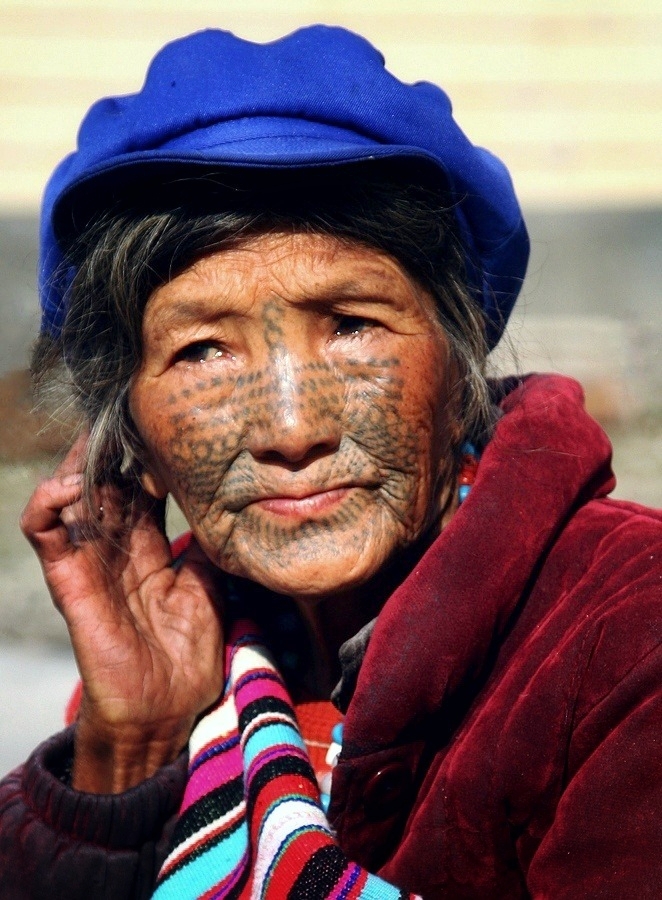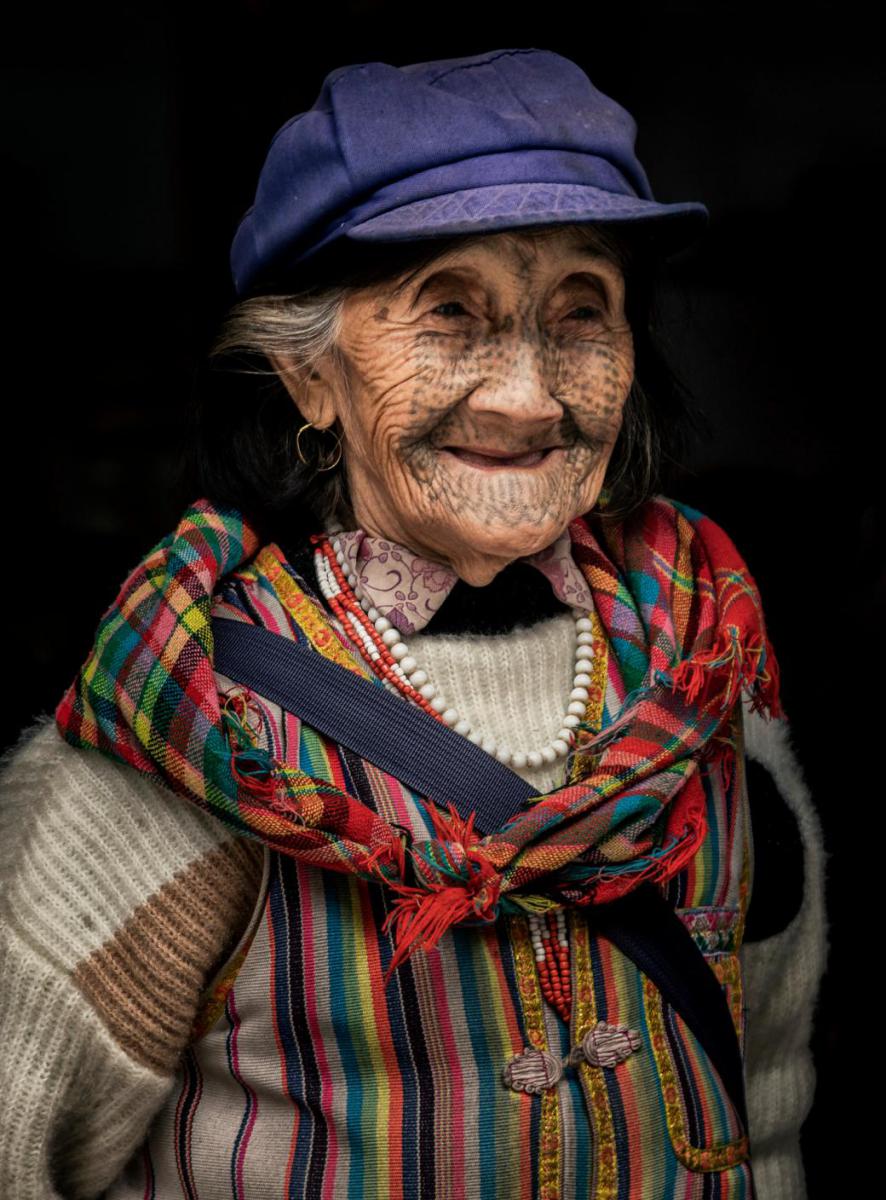

(By Mo Tingting)Influenced by a trend that has emerged in recent years, more people are getting inked around the world. However, in a village southwest of China’s Yunnan Province, the tattoo is a traditional practice. Women of Derung ethnic group have kept this art alive for hundreds of years by marking their faces with herbal pigment. There are only a few dozen face-tattooed women left today. To see one of these ladies is a true privilege, and to chat with one is a once-in-a-lifetime encounter. However, there is no fixed explanation for the reasons behind the tattoos.

An isolated tribe of Derung
There were few documents about the origins of Derung. It was known, nevertheless, that during the period of the Tang Dynasty (618-907), Derung were under the jurisdiction of the kingdoms of Nanzhao and Dali. Later on, from the Yuan Dynasty (1271-1368) to the Qing Dynasty (1636-1912), Derung were governed by the local heads of the Naxi ethnic group. Most Derung people live along the banks of Dulong River and along the border with Myanmar.
Derung, numbering about 5,000 members, are one of China’s smallest ethnic groups. Their traditional houses are made of logs in northern areas and of bamboo further south. Though their lives have changed slightly within the last hundred years, many still follow their ancient custom and religious beliefs. Their languages belong to the Tibetan-Myanmese group of the Chinese-Tibetan language family. They have no written languages, and traditionally, records were made and messages transmitted by engraving notches in wood and tying knots.
Derung people have long lived a traditional lifestyle of farming, hunting and fruit picking. They have a preference for baked potatoes, cakes and biscuits as well as porridge. Bee pupae are one of the exquisite foods among the people of Derung nationality. It is said that the fact that there are relatively more people of over one hundred years old has something to do with eating bee pupae regularly.
Dulong women usually wear long-sleeve garments, following the lead of Lisu nationality and colored bead necklace chains, while men love to wear a chopper, a crossbow and an arrow bag on the waist. Made from hemp, Derung hand-knitting blankets are widely seen in Derung people’s life. This wear-resisting blanket has lots of functions. In the daytime, it is a piece of clothing worn by Derung people. When the night falls, it becomes a quilt. When friends are coming from afar, it is also given as a gift. Besides, it is also a love token among young people. The blanket is usually one meter in width and 2 meters in length. It is wrapped around the body and knotted at the right shoulder, leaving the left shoulder uncovered. No matter what clothes Derung people wear, they would wrap themselves with a blanket, forming a unique ethnic style.

Kaquewa Festival is the New Year of Derung people in this area. Usually, this festival is held at the end of the twelfth month of the lunar year or at the beginning of the first month of the next year. The festival has a variety of ceremonial activities including “offer sacrifices to mountain gods”, “shoot human-face animal” and “butcher cows”. Derung people have a fancy for singing and dancing. No matter whether it is for the sake of production, harvest, hunting, house building, marriage proposal or festival, they have a tendency to express themselves and confide inner feelings of pleasure, anger, sorrow and joy through songs and dances.
Facial tattoos of Derung women
There was a unique tradition for Derung girls to get their faces tattooed once they reached the age of 12 or 13. Legend has it that the tradition of Derung tattoos originated from the late Ming Dynasty (1368-1644). Some said that only tattooed women are able to guide their souls back to their hometowns after death while others said tattoos are used to keep northern tribes from taking Derung girls by force. At that time, Derung people were usually attacked by other ethnic groups, and women were captured as slaves. To avoid being raped, Derung women tattooed their faces to make themselves less attractive and thus protect themselves. However, according to some scholars, the facial tattoo of Derung people is related to their lost totem.

The design of the tattoo indicated which clan they belonged to. For example, those residing along the upper reaches of the Dulong River would tattoo almost the entire face, including the bridge of the nose, both lips and both cheeks; whereas those along the lower reaches of the river would only tattoo a ring of dots around the nose, a few lines on the bottom lip, and some dots on the jaw, leaving much more blank space. The differences in the facial area covered by the tattooing process may have been a result of the distance located from potential invaders.

The dye is made of ashes wiped from the bottom of a pan, while the tools used for tattoo are bamboo sticks and sharp thorns on spiny vines. Firstly, the girl’s face would be cleaned, then she would lie flat on the ground. To make a butterfly tattoo, an experienced tattooist may dip a bamboo slip into sooty water and draw on the girl’s face, then beat a thorn into the skin with a small stick in the designed area. After the entire facial pattern had been completed, the tattooist would apply to her face a treatment containing Chinese gentian (an herb with disinfecting qualities), and continuously rub it into her skin. This mixture, also containing the pan-bottom soot used earlier, must first be left to set for three days and three nights before use. After a week or two, once the wounds had healed, the patterns on the girl’s face would be indigo in color, and thus remain that way throughout her life.


Face tattooing is filled with pain so that the girl being tattooed won’t be able to fully open her eyes or mouth. This tradition has continued to modern times despite the fact that Derung were no longer under attack from neighboring tribes. Since this custom has been abated in 1949, there were only a few Derung women with facial tattoos, among which the youngest was born in 1953. These tattooed women are named the living fossil of Derung people.
Tips:
Source: China-ASEAN Panorama
桂ICP备14000177号 Copyright@2006-2013 Guangxi China-ASEAN Panorama Magazine Agency Co., Ltd. All Rights Reserved